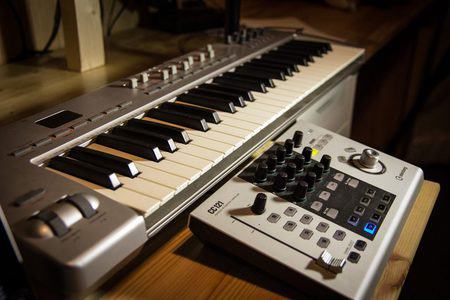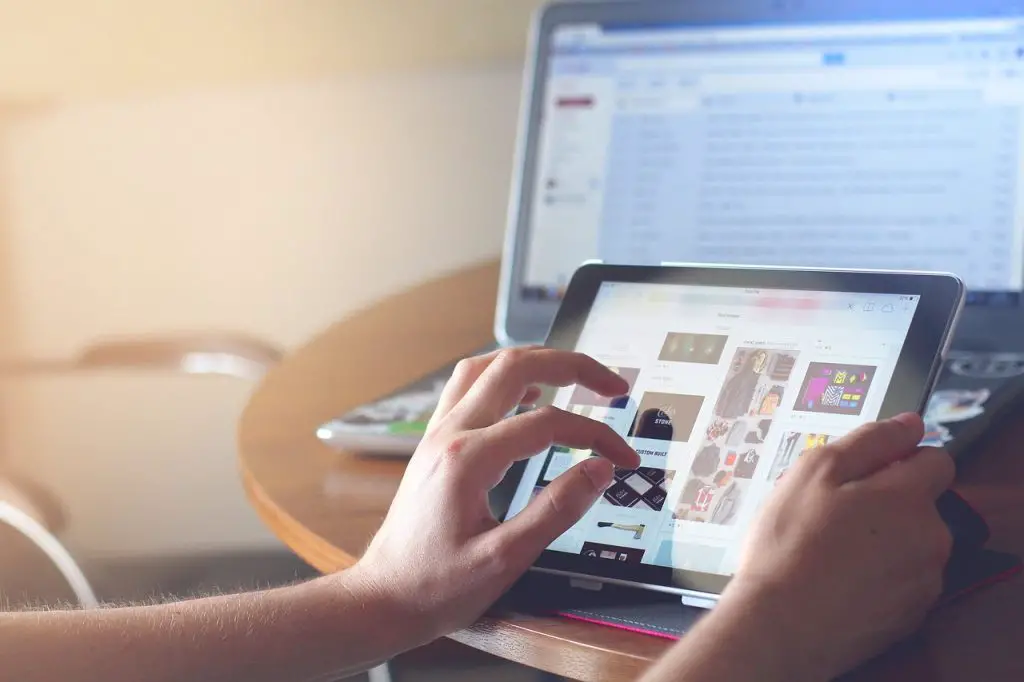The world of modern recording solutions and gear is varied and intricate, but anyone who is getting into music production or upgrading their production gear will know that touchscreen devices are becoming more popular in the industry.
Do touchscreens help with music production and streamline the process, or do they hinder the process?
Touchscreens can be good for music production. Touchscreens are best used as a supplementary interface rather than a primary means of control. Using a touchscreen is straightforward and intuitive, but it is slower than other control mediums for music production.
There are so many mixing consoles and recording programs available now that using a touchscreen system makes sense in many situations … but is it worthwhile investing in touchscreen hardware or software for music production?
There are several ways to approach this query, so let’s take the time to find out!
Is Using A Touchscreen Good For Music Production?
There are several touchscreen options regarding recording equipment, consoles, and interfaces available on the market nowadays, but whether or not these devices are useful or helpful for music production is yet to be fully determined.
How useful are touchscreens for music production in comparison to physical controllers or consoles, and how do you know if touchscreen hardware is a good fit for you?

Touchscreens can be an advantage for music production if the touchscreens are capable of the task and if they are designed to be used in this way for long periods of time.
Using a touchscreen for controlling mixers, effects, and other production aspects can be useful because the experience is very intuitive and requires little learning, but it does have some drawbacks as well.
Touchscreens can be very expensive, and not all recording programs work well with touchscreen functionality, which means that most recording programs work better with physical controls or the standard mouse and keyboard approach.

With that in mind, there are some modern DAW systems that are catered for use with touchscreens, and they work very effectively with the hardware. In this case, whether or not a touchscreen is good for production becomes a personal preference decision rather than a functionality issues.
At the end of it, touchscreens are good for music production if you use them in the right format with the right hardware and software combination.
If you use basic programs such as Garage Band or other smaller, free recording software, then using a touchscreen or device such as a tablet will work well, but professional setups are very different.

Professional touchscreen mixing consoles are available, and whether or not they will work well for you is personal preference, but the engineers and producers who use this type of setup all enjoy it due to the touchscreen, as using this hardware is very simple and straightforward.
However, with that said, there are some major pros and cons of using touchscreens for music production that are worth considering.
The Pros Of Touchscreens For Music Production
Using touchscreens in music production can be ideal for many producers and engineers, but there are some important pros that make them stand out from other setups and that make this type of hardware very functional.
Using touchscreens allows a producer or engineer to adjust multiple controls simultaneously. Multi-touch functionality allows multiple faders or controls to be adjusted at once, which cannot be done with a regular keyboard and mouse setup.
Touchscreens are very intuitive to use, and programs that are designed for touchscreen use are far simpler to use than those that are not, as these programs tend to have better labels and larger digital interfaces to work with, making them more straightforward to use.
Using touchscreen hardware also takes up far less space on a desk than analog consoles or even DAW controllers do. This means that touchscreen setups are better for those with limited studio space.
This type of interface between producer and DAW is also a great way to feel more connected and be in better control of your production than by using a mouse or a keyboard. Physically touching the controls and making adjustments is the next best thing after using an analog console for a hands-on production experience.
The Cons Of Touchscreens For Music Production
With all of the pros of using touchscreens for music production, there are also cons as well. Using a touchscreen for production can present some challenges that must be considered before investing in this type of hardware.
The truth is that using a touchscreen exclusively does not provide the most efficient or speedy workflow process. Using a keyboard with hotkeys and shortcuts is a far faster and more efficient way to navigate a DAW, and using a physical DAW controller is far faster than a touchscreen.

Touchscreens can be hindered by latency, they can be difficult to use when a piece of software is not optimized for touchscreen use, they can be frustrating if they are not multi-touch capable, and touchscreens can be a disconnection from the console in a way that only those with years of experience working with analog faders will understand.
The biggest trouble with touchscreens in music production is that they require the user to look at them constantly. It is impossible to make accurate adjustments on a touch screen without looking at it is, because it provides physical or special feedback to the user.
This can be a problem when making adjustments quickly, while multi-tasking, or while making adjustments in the recording software while looking up at the person who is performing the music.
This drawback, coupled with the fact that using a touchscreen can be very slow, especially for post-production, is why most engineers and producers prefer to use touchscreens in conjunction with other interfaces or to steer away from touchscreens altogether.
Should You Use Touchscreens For Production?
We have arrived a point in the article where the major facts have been presented, and it is time to determine whether or not a touchscreen is an ideal interface for you and your form of music production.
The truth here is that a touchscreen is always a great supplementary interface, but it is not an ideal primary or sole interface for music production. Touchscreens work well for live mixing, but they can be a hindrance to workflow in music production.
For this reason, it is important to consider your own use of the touchscreen. If you are looking to upgrade your professional system by adding a touchscreen interface, be sure to only use it as a secondary interface rather than a primary.
If you are looking for a very cheap way to begin recording your own music in the most simple and straightforward way possible, then using a small touchscreen device may be the ideal solution for you.
Take the time to consider how you will use a touchscreen in your production, and it will become clear to you whether or not this technology will be useful in your situation.
Conclusion
Touchscreens are very useful supplementary devices for music production, but they are not ideal primary interfaces yet. As technology improves, the touchscreen may become more useful, but as the world of production stands today, touchscreens are still inferior to physical DAW controllers.
Using a touchscreen for music production can be an advantage in some circumstances and for some setups, but the use cases for this type of console or interface are specific on an individual basis. Touchscreens can be useful for music production, but whether or not they are useful for you is an individual choice.
You can learn what you need to make beats here.
